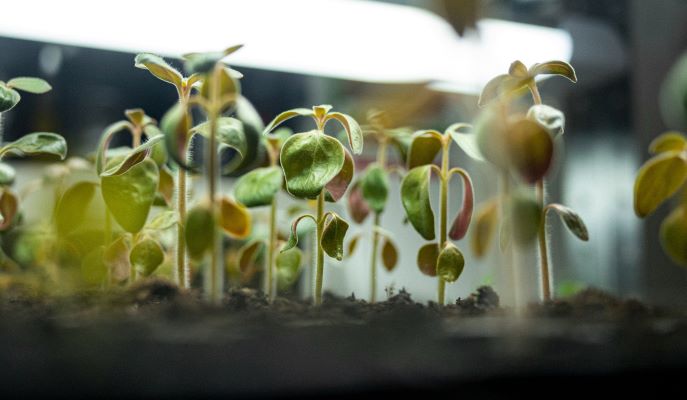The last few years have been harsh for traditional outdoor farming. Severe droughts, erratic temperature fluctuations and These conditions also affect livestock, as dry pastures and lack of forage put considerable strain on animal agriculture.
Several regions across Africa and the Middle East have undergone the most impacts, threatening food security in countries struggling with long-term rainfall shortages. Navigating these challenges warrants a shift toward more adaptive food production methods. In this context, indoor crop cultivation assumes enormous importance.
Bringing Farming Indoors
Since droughts primarily affect crops grown in open fields, bringing farming indoors may be a solution. The concept dates back thousands of years to the famed Hanging Gardens of Babylon, steadily evolving into what is now known as vertical farming. This innovative agricultural approach involves growing crops in vertically stacked layers within regulated indoor environments.
Vertical farming reduces drought outcomes by facilitating a system for irrigating plants with precision. Advanced methods involve capturing runoff and recirculating nutrient-rich water systemwide, minimizing wastage. In this way, these farms can use up to 98% less water than conventional outdoor agriculture.
Indoor crop cultivation utilizes three prominent system structures to maximize resource efficiency and boost climate resilience. For example, hydroponics involves growing plants in enriched aqueous solution. This method transports nutrients straight to the roots, promoting healthier yields.
Aquaponics follows a similar approach but uses water from fish tanks to support plant growth. It’s a symbiotic relationship where fish waste provides nutrients to the crops, and the plants oxygenate the water for the fish.
The third system structure is aeroponics, which involves cultivating plants in an air or mist environment. This method uses 90% less water and soil and is already used across several African countries — including Cape Verde and South Africa — to grow indigenous vegetables.
Hoophouses for Smallholder Farming
One of the biggest limiting factors of vertical farming is the substantial infrastructure requirements to create the ideal indoor environment. Artificial climate control systems, lighting fixtures, intricate pipe networks and other necessary equipment require significant financial outlays, often out of reach for small-scale farms.
For farmers who cannot afford such capital investment but still want to grow crops indoors, a hoophouse may provide a more practical alternative. Also called high tunnels, hoophouses are highly versatile enclosed structures supporting indoor crop cultivation. They protect against harsh weather and rely on natural soil and controlled sunlight to ensure optimal growing conditions.
As a result, plants yield higher volumes more rapidly with fewer resources. For example, tomatoes are ready for harvesting a month sooner when cultivated in a hoophouse than outside the structure. In this way, they offer a better return on investment than conventional greenhouses. Hoophouses support in-ground crop production, such as tomatoes, leafy greens and foliage plants.
5 Success Tips for Drought-Resilient Food Production
Indoor farming may be a proven way to tackle increasing drought rates worldwide, but only when done right. Some valuable tips to keep in mind include:
- Prioritize drought-tolerant plants: Select crops known to thrive with minimal water requirements. Crucial factors like root depth and the ability to withstand heat will determine plant viability in enclosed spaces.
- Group plants according to their watering needs: This approach enables efficient aqua management by ensuring farmers use only the water needed for specific areas. It also makes the watering schedule simpler.
- Install drip irrigation systems: Overhead sprinklers and other traditional methods can result in excessive water loss through inefficient distribution and evaporation. Drip irrigation and soaker hoses apply water to the plant root where it is needed most, making them up to 90% more efficient in optimizing moisture uptake and reducing runoff.
- Eliminate weeds: Unwanted plants compete for water and other nutrients. Farmers must aggressively remove weeds from growing areas to ensure optimal crop growth and yield.
- Mulch: Organic mulching conserves soil moisture, especially during dry weather. It provides a protective barrier between the soil and the atmosphere, reducing evaporation and improving water absorption.
Grow Crops Indoors to Mitigate Drought Impacts
With drought conditions expected to be more prolonged and frequent, farmers must turn to innovative agricultural practices to improve resilience in food production. Indoor farming is a promising solution for this endeavor and would benefit from wide-scale adoption.

Jane is an agriculture and environmental journalist and the founder and editor-in-chief of Environment.co, where she covers sustainability and eco-friendly living.








